▼ Scientists create the world's shortest, fastest laser pulse [10-31-17]
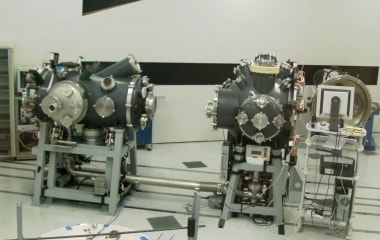 Scientists have successfully created the world’s shortest X-ray laser pulse with a duration of just 43 attoseconds, an advance that will allow us to observe electrons in slow motion.
In order to fully understand the dynamics during a chemical reaction, scientists must be able to study all movements of atoms and molecules on their basic time scale.
Molecules rotate in the range of picoseconds, their atoms vibrate in the range of femtoseconds, and the electrons move in the range of attoseconds.
Researchers from ETH Zurich in Switzerland succeeded in generating the world’s shortest laser pulse with a duration of only 43 attoseconds.
This laser pulse is the shortest controlled event that has ever been created by humans.
The researchers can now observe in high detail how electrons move within a molecule or how chemical bonds are formed.
Attosecond spectroscopy could contribute to the development of more efficient solar cells since it is now for the first time possible to follow the process of excitation through sunlight up to the generation of electricity step by step.
A detailed understanding of the charge transfer pathway could help optimizing the efficiency of the next generation of photosensitive elements.
Attosecond laser spectroscopy is not only suitable for mere observation. Chemical reactions can also be directly manipulated.
Using a laser pulse can alter the course of a reaction - even chemical bonds can be broken by stopping the charge shift at a certain location in the molecule.
Such targeted interventions in chemical reactions have not been possible until now, since the time scale of electron movement in molecules was previously unreached. Scientists have successfully created the world’s shortest X-ray laser pulse with a duration of just 43 attoseconds, an advance that will allow us to observe electrons in slow motion.
In order to fully understand the dynamics during a chemical reaction, scientists must be able to study all movements of atoms and molecules on their basic time scale.
Molecules rotate in the range of picoseconds, their atoms vibrate in the range of femtoseconds, and the electrons move in the range of attoseconds.
Researchers from ETH Zurich in Switzerland succeeded in generating the world’s shortest laser pulse with a duration of only 43 attoseconds.
This laser pulse is the shortest controlled event that has ever been created by humans.
The researchers can now observe in high detail how electrons move within a molecule or how chemical bonds are formed.
Attosecond spectroscopy could contribute to the development of more efficient solar cells since it is now for the first time possible to follow the process of excitation through sunlight up to the generation of electricity step by step.
A detailed understanding of the charge transfer pathway could help optimizing the efficiency of the next generation of photosensitive elements.
Attosecond laser spectroscopy is not only suitable for mere observation. Chemical reactions can also be directly manipulated.
Using a laser pulse can alter the course of a reaction - even chemical bonds can be broken by stopping the charge shift at a certain location in the molecule.
Such targeted interventions in chemical reactions have not been possible until now, since the time scale of electron movement in molecules was previously unreached.
|
▼ Oct 30, 1207 BC: The oldest recorded solar eclipse [10-31-17]
 Scientists have identified the date of the oldest recorded solar eclipse - an event that occurred on October 30 in 1207 B.C.
Using a combination of material from the Bible and an ancient Egyptian text, researchers were able to refine their understanding of when the Egyptian pharaohs ruled, in particular the reign of Ramesses the Great.
Lines from the Old Testament book of Joshua state that after Joshua led the people of Israel into Canaan - a region that covered modern-day Israel and Palestine - he prayed:
“Sun, stand still at Gibeon, and moon, in the Valley of Aijalon. And the sun stood still, and the moon stopped, until the nation took vengeance on their enemies.”
Modern English translations, which follow the King James translation of 1611, usually interpret this text to mean that the sun and the moon stopped moving.
Going back to the original Hebrew text, we determined that an alternative meaning could be that the sun and moon just stopped doing what they normally do: they stopped shining.
In this context, the Hebrew words could be referring to a solar eclipse, when the moon passes between the earth and the sun, and the sun appears to stop shining.
This interpretation is supported by the fact that the Hebrew word translated ‘stand still’ has the same root as a Babylonian word used in ancient astronomical texts to describe eclipses.
Independent evidence that the Israelites were in Canaan between 1500 and 1050 B.C. can be found in the Merneptah Stele, an Egyptian text dating from the reign of the Pharaoh Merneptah, son of the Ramesses the Great.
The large granite block, held in the Egyptian Museum in Cairo, says that it was carved in the fifth year of Merneptah’s reign and mentions a campaign in Canaan in which he defeated the people of Israel. Scientists have identified the date of the oldest recorded solar eclipse - an event that occurred on October 30 in 1207 B.C.
Using a combination of material from the Bible and an ancient Egyptian text, researchers were able to refine their understanding of when the Egyptian pharaohs ruled, in particular the reign of Ramesses the Great.
Lines from the Old Testament book of Joshua state that after Joshua led the people of Israel into Canaan - a region that covered modern-day Israel and Palestine - he prayed:
“Sun, stand still at Gibeon, and moon, in the Valley of Aijalon. And the sun stood still, and the moon stopped, until the nation took vengeance on their enemies.”
Modern English translations, which follow the King James translation of 1611, usually interpret this text to mean that the sun and the moon stopped moving.
Going back to the original Hebrew text, we determined that an alternative meaning could be that the sun and moon just stopped doing what they normally do: they stopped shining.
In this context, the Hebrew words could be referring to a solar eclipse, when the moon passes between the earth and the sun, and the sun appears to stop shining.
This interpretation is supported by the fact that the Hebrew word translated ‘stand still’ has the same root as a Babylonian word used in ancient astronomical texts to describe eclipses.
Independent evidence that the Israelites were in Canaan between 1500 and 1050 B.C. can be found in the Merneptah Stele, an Egyptian text dating from the reign of the Pharaoh Merneptah, son of the Ramesses the Great.
The large granite block, held in the Egyptian Museum in Cairo, says that it was carved in the fifth year of Merneptah’s reign and mentions a campaign in Canaan in which he defeated the people of Israel.
|
▼ Potential 7th taste identified [10-30-17]
 Scientists have identified a potential seventh taste - a sensitivity towards carbohydrates - which may be behind the craving for starchy foods such as bread, pasta and rice.
Researchers from Australia have shown that sensitivity to carbohydrates, which they call the seventh taste, increases intake of starchy food and a larger waistline.
The team had previously named fat as the "sixth taste".
The fat taste studies explored the tongue's ability to detect fat as a distinct taste similar to people's ability to sense sweet, sour, bitter, salty and umami - the five traditional or classic tastes.
The research looked at two carbohydrates, maltodextrin and oligofructose, both found in common foods like bread, pasta and rice.
The study later analysed preferences of 34 adults and found significant correlations between how sensitive someone was to carbohydrates, their dietary intake and their waist measurement.
Those who were most sensitive to the carbohydrate taste ate more of these foods and had a larger waist.
This line of taste research was important because the increasing problem of diet-related chronic illnesses, such as obesity, required a greater understanding of the drivers of the food we consume.
Increased energy intake, in particular greater intakes of energy-dense foods, is thought to be one of the major contributors to the global rise of obesity.
Interestingly, what we found in the fat taste studies was that the people who were more sensitive to fat consumed less fatty foods, but it is the other way around for carbohydrates.
The individuals who are more sensitive to the 'taste' of carbohydrate also have some form of subconscious accelerator that increases carbohydrate or starchy food consumption. Scientists have identified a potential seventh taste - a sensitivity towards carbohydrates - which may be behind the craving for starchy foods such as bread, pasta and rice.
Researchers from Australia have shown that sensitivity to carbohydrates, which they call the seventh taste, increases intake of starchy food and a larger waistline.
The team had previously named fat as the "sixth taste".
The fat taste studies explored the tongue's ability to detect fat as a distinct taste similar to people's ability to sense sweet, sour, bitter, salty and umami - the five traditional or classic tastes.
The research looked at two carbohydrates, maltodextrin and oligofructose, both found in common foods like bread, pasta and rice.
The study later analysed preferences of 34 adults and found significant correlations between how sensitive someone was to carbohydrates, their dietary intake and their waist measurement.
Those who were most sensitive to the carbohydrate taste ate more of these foods and had a larger waist.
This line of taste research was important because the increasing problem of diet-related chronic illnesses, such as obesity, required a greater understanding of the drivers of the food we consume.
Increased energy intake, in particular greater intakes of energy-dense foods, is thought to be one of the major contributors to the global rise of obesity.
Interestingly, what we found in the fat taste studies was that the people who were more sensitive to fat consumed less fatty foods, but it is the other way around for carbohydrates.
The individuals who are more sensitive to the 'taste' of carbohydrate also have some form of subconscious accelerator that increases carbohydrate or starchy food consumption.
|
▼ Kala Azar may be caused by virus [10-30-17]
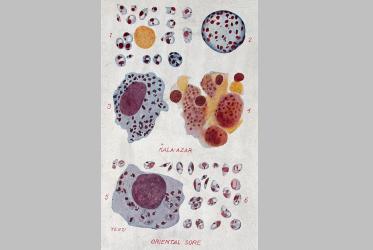 Researchers have stumbled upon evidence of an unknown virus that may be responsible for the persistence of kala-azar or visceral leishmaniasis, a parasite infection that has spawned epidemics and sickened thousands of Indians for over a century.
It's still early to pointedly blame the virus but its discovery portends a new kind of treatment regime and may aid attempts to eradicating the disease.
Historically, the parasite Leishmania donovani is believed to be responsible for the dreaded infection. People get infected when bitten by an insect called the sandfly, which harbours the disease-causing parasite.
Scientists from West Bengal and Uttar Pradesh said that another parasite may be involved. Another parasite called Leptomonas seymouri may also be present.
The researchers inferred this after they found the L seymouri and a virus called Lepsey NLV1 within it in 20 of 22 biological samples of patients who had a residual L donovani infection.
They reported their findings in an online version of the peer-reviewed Archives of Virology.
Kala Azar: Know More Researchers have stumbled upon evidence of an unknown virus that may be responsible for the persistence of kala-azar or visceral leishmaniasis, a parasite infection that has spawned epidemics and sickened thousands of Indians for over a century.
It's still early to pointedly blame the virus but its discovery portends a new kind of treatment regime and may aid attempts to eradicating the disease.
Historically, the parasite Leishmania donovani is believed to be responsible for the dreaded infection. People get infected when bitten by an insect called the sandfly, which harbours the disease-causing parasite.
Scientists from West Bengal and Uttar Pradesh said that another parasite may be involved. Another parasite called Leptomonas seymouri may also be present.
The researchers inferred this after they found the L seymouri and a virus called Lepsey NLV1 within it in 20 of 22 biological samples of patients who had a residual L donovani infection.
They reported their findings in an online version of the peer-reviewed Archives of Virology.
Kala Azar: Know More
- Kala-azar is endemic to the Indian subcontinent in 119 districts in four countries (Bangladesh, Bhutan, India and Nepal). India itself accounts for half the global burden of the disease.
- If untreated, kala-azar can kill within two years of the onset of the ailment, though the availability of a range of drugs has meant that less than one in 1,000 now succumbs to the disease.
- However, scientists are still not clear how the parasites cause the infection and how they manage to hide within the body.
|
▼ Scientists edit single letters of DNA through REPAIR platform's ABE method [10-30-17]
 Two teams of scientists unveiled a new generation of programmable molecular machines that can seamlessly repair tiny but deadly errors in the genetic coding of living organisms.
Taken together, the technologies expand the reach and precision of gene-editing, and open a path to fixing mutations that cause genetic blindness, sickle-cell anaemia, cystic fibrosis, and thousands of other debilitating diseases.
One approach, called base editing, performs "chemical surgery" directly on DNA, permanently altering faulty segments without cutting into the genome's ladder-like structure.
The second technique corrects errors in another type of genetic material called RNA, where anomalies can also ruin health or lead to death.
First Method
The four chemical building blocks of DNA, called bases, are represented by the letters A, T, G and C, and always strung together in pairs -- "A" with "T", and "G" with "C".
All it takes is one pair in the wrong place -- a genetic mutation -- for things to go horribly wrong.
Another gene-editing tool already in wide use called CRISPR-cas9 cuts the DNA strand, typically to insert or delete a DNA base pair.
But the new editing technique makes changes without breaking the DNA's spiralling chain.
In a breakthrough last year, the research team showed how to swap a C-G for a T-A base pair.
Laboratories around the world successfully used the technique to fix so-called "point mutations" in organisms ranging from bacteria and corn to mice and human embryos.
But only about 15 percent of point mutations in humans known to be linked with disease can be fixed this way till now.
The new tool -- dubbed "ABE" for Adenine Base Editor -- cleverly coaxes an A-T base pair into a G-C base pair, repairing a class of mutation that accounts for about half of the 32,000 known pathogenic point mutations in humans.
Not only did the procedure have a much higher success rate than other gene-editing techniques, there were virtually no side-effects, such as unwanted DNA duplications or deletions.
Second Method
The human genetic code is about 3 billion letters long.
That's a lot of information, and these "letters"-the genetic bases adenine, cytosine, thymine, and guanine-are stored in nearly every one of the cells that makes up your body in the form of DNA.
Now, scientists have devised a way to fix a certain class of genetic errors by re-shaping the very molecules that form the basis of the genetic code.
Researchers have modified CRISPR to edit the same types of errors out of RNA, which is closely related to DNA calling this new platform REPAIR.
The team genetically engineered an enzyme that literally rearranges the atoms of one kind of DNA base to turn it into another, all without disrupting the genetic material that surrounds it.
More than 50,000 human diseases, including sickle-cell anaemia and phenylketonuria, are the result of a single change in the genetic code-one letter out of three billion.
So it would be incredibly useful to have a technique whereby this so-called point mutation can be repaired without messing around too much with the surrounding DNA. Two teams of scientists unveiled a new generation of programmable molecular machines that can seamlessly repair tiny but deadly errors in the genetic coding of living organisms.
Taken together, the technologies expand the reach and precision of gene-editing, and open a path to fixing mutations that cause genetic blindness, sickle-cell anaemia, cystic fibrosis, and thousands of other debilitating diseases.
One approach, called base editing, performs "chemical surgery" directly on DNA, permanently altering faulty segments without cutting into the genome's ladder-like structure.
The second technique corrects errors in another type of genetic material called RNA, where anomalies can also ruin health or lead to death.
First Method
The four chemical building blocks of DNA, called bases, are represented by the letters A, T, G and C, and always strung together in pairs -- "A" with "T", and "G" with "C".
All it takes is one pair in the wrong place -- a genetic mutation -- for things to go horribly wrong.
Another gene-editing tool already in wide use called CRISPR-cas9 cuts the DNA strand, typically to insert or delete a DNA base pair.
But the new editing technique makes changes without breaking the DNA's spiralling chain.
In a breakthrough last year, the research team showed how to swap a C-G for a T-A base pair.
Laboratories around the world successfully used the technique to fix so-called "point mutations" in organisms ranging from bacteria and corn to mice and human embryos.
But only about 15 percent of point mutations in humans known to be linked with disease can be fixed this way till now.
The new tool -- dubbed "ABE" for Adenine Base Editor -- cleverly coaxes an A-T base pair into a G-C base pair, repairing a class of mutation that accounts for about half of the 32,000 known pathogenic point mutations in humans.
Not only did the procedure have a much higher success rate than other gene-editing techniques, there were virtually no side-effects, such as unwanted DNA duplications or deletions.
Second Method
The human genetic code is about 3 billion letters long.
That's a lot of information, and these "letters"-the genetic bases adenine, cytosine, thymine, and guanine-are stored in nearly every one of the cells that makes up your body in the form of DNA.
Now, scientists have devised a way to fix a certain class of genetic errors by re-shaping the very molecules that form the basis of the genetic code.
Researchers have modified CRISPR to edit the same types of errors out of RNA, which is closely related to DNA calling this new platform REPAIR.
The team genetically engineered an enzyme that literally rearranges the atoms of one kind of DNA base to turn it into another, all without disrupting the genetic material that surrounds it.
More than 50,000 human diseases, including sickle-cell anaemia and phenylketonuria, are the result of a single change in the genetic code-one letter out of three billion.
So it would be incredibly useful to have a technique whereby this so-called point mutation can be repaired without messing around too much with the surrounding DNA.
|
▼ Scientists develop RoboBee that flies, swims and dives! [10-27-17]
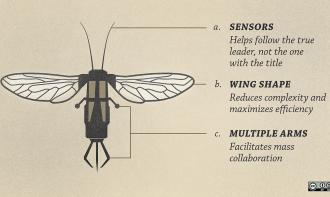 Harvard scientists have developed a next-generation hybrid version of RoboBee that can fly, dive into water, swim, propel itself back out of water, and land safely.
The RoboBee is 1,000 times lighter than any previous aerial-to-aquatic robot, and could be used for numerous applications, from search-and-rescue operations to environmental monitoring and biological studies, researchers said.
This is the first micro-robot capable of repeatedly moving in and through complex environments. Harvard scientists have developed a next-generation hybrid version of RoboBee that can fly, dive into water, swim, propel itself back out of water, and land safely.
The RoboBee is 1,000 times lighter than any previous aerial-to-aquatic robot, and could be used for numerous applications, from search-and-rescue operations to environmental monitoring and biological studies, researchers said.
This is the first micro-robot capable of repeatedly moving in and through complex environments.
|
▼ Organic NIIR filter developed by CSIR-NIIST [10-25-17]
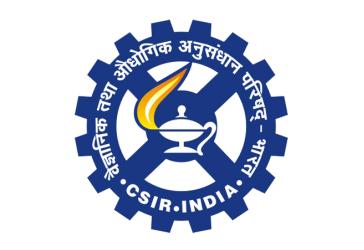 An organic filter that allows only near-infrared (NIR) light to pass through has been developed by scientists at the CSIR-National Institute for Interdisciplinary Science and Technology (CSIR-NIIST) based in Thiruvananthapuram.
The new NIR filter can be used for night vision glasses, night photography, and will have applications in security and forensics such as identifying blood stains on a dark fabric.
Currently available inorganic filters are expensive and brittle whereas organic filters are easy to process and flexible too.
The filter was prepared by mixing a black dye (diketopyrrolopyrrole or DPP) having an amide group that helps the molecules to be in close contact with each other and interact, leading to changes in their optical properties.
The organogel-based filter has the ability to absorb both ultraviolet and visible light while allowing the near-infrared light alone to pass through.
The nanofibres formed through the self-assembly of the DPP molecules are responsible for the broad light absorption of the material, making it appear dark.
How Scientists Developed It An organic filter that allows only near-infrared (NIR) light to pass through has been developed by scientists at the CSIR-National Institute for Interdisciplinary Science and Technology (CSIR-NIIST) based in Thiruvananthapuram.
The new NIR filter can be used for night vision glasses, night photography, and will have applications in security and forensics such as identifying blood stains on a dark fabric.
Currently available inorganic filters are expensive and brittle whereas organic filters are easy to process and flexible too.
The filter was prepared by mixing a black dye (diketopyrrolopyrrole or DPP) having an amide group that helps the molecules to be in close contact with each other and interact, leading to changes in their optical properties.
The organogel-based filter has the ability to absorb both ultraviolet and visible light while allowing the near-infrared light alone to pass through.
The nanofibres formed through the self-assembly of the DPP molecules are responsible for the broad light absorption of the material, making it appear dark.
How Scientists Developed It
- The researchers developed the filter by mixing the organogel with a transparent polymer (polydimethylsiloxane).
- The addition of the dye turns the transparent polymer into a semi-transparent one and the filter appears black as it absorbs most of the ultraviolet-visible light.
- Only very little of the organogel has to be added to the polymer to make the filter.
- The material is present throughout the polymer matrix even though very little is added.
- The filter was found to absorb light from 300-850 nm (both ultraviolet, visible and a part of NIR light) and transmit NIR light from 850-1500 nm.
- The researchers tested it for night photography and found the filter responsive only to NIR light.
- A potential application of the new material is in the design of hidden security codes on documents which can be viewed only through a NIR-readable camera.
|
▼ Mars found to have a magnetic twisted tail [10-24-17]
 Nasa's MAVEN (Mars Atmosphere and Volatile Evolution Mission) spacecraft, which has been orbiting Mars since 2014, has been gathering data that will allow scientists to understand changes in the upper atmosphere of the Red Planet.
It is known that Mars, billions of years ago, had atmosphere and water and could have supported life. It is now barren and cold.
What Mars now has is a thin atmosphere–and even this is at risk, say scientists who have discovered that the planet has a twisted tail.
The process that created this tail could also allow some of Mars' already thin atmosphere to escape to space.
Mars' magnetic tail, or magnetotail, is unique in the solar system. It's not like the magnetotail found at Venus, a planet with no magnetic field of its own, nor is it like Earth's, which is surrounded by its own internally generated magnetic field.
Instead, it is a hybrid between the two.
The team found that a process called "magnetic reconnection” must have a big role in creating the Martian magnetotail because, if reconnection were occurring, it would put the twist in the tail.
A model the scientists built suggested that such reconnection would cause the planet's tail to twist 45 degrees from what is expected, based on the direction of the magnetic field carried by the solar wind, the scientist explained.
The model was found to be in agreement with readings based on MAVEN data.
Mars lost its global magnetic field billions of years ago and now just has remnant ‘fossil' magnetic fields embedded in certain regions of its surface.
Mars' magnetotail is formed when magnetic fields carried by the solar wind join with the magnetic fields embedded in the Martian surface in a process called magnetic reconnection.
The solar wind is a stream of electrically conducting gas continuously blowing from the Sun's surface into space at about one million miles (1.6 million kilometres) per hour.
It carries magnetic fields from the Sun with it.
If the solar wind field happens to be oriented in the opposite direction to a field in the Martian surface, the two fields join together in magnetic reconnection, such that the reconnection might propel some of the atmosphere of Mars into space.
Mars' upper atmosphere has electrically charged particles (ions), which respond to electric and magnetic forces and flow along magnetic field lines.
Since the Martian magnetotail is formed by linking surface magnetic fields to solar wind fields, ions in the Martian upper atmosphere have a pathway to space if they flow down the magnetotail.
Like a stretched rubber band suddenly snapping to a new shape, magnetic reconnection also releases energy, which could actively propel ions in the Martian atmosphere down the magnetotail into space.
MAVEN: Know More Nasa's MAVEN (Mars Atmosphere and Volatile Evolution Mission) spacecraft, which has been orbiting Mars since 2014, has been gathering data that will allow scientists to understand changes in the upper atmosphere of the Red Planet.
It is known that Mars, billions of years ago, had atmosphere and water and could have supported life. It is now barren and cold.
What Mars now has is a thin atmosphere–and even this is at risk, say scientists who have discovered that the planet has a twisted tail.
The process that created this tail could also allow some of Mars' already thin atmosphere to escape to space.
Mars' magnetic tail, or magnetotail, is unique in the solar system. It's not like the magnetotail found at Venus, a planet with no magnetic field of its own, nor is it like Earth's, which is surrounded by its own internally generated magnetic field.
Instead, it is a hybrid between the two.
The team found that a process called "magnetic reconnection” must have a big role in creating the Martian magnetotail because, if reconnection were occurring, it would put the twist in the tail.
A model the scientists built suggested that such reconnection would cause the planet's tail to twist 45 degrees from what is expected, based on the direction of the magnetic field carried by the solar wind, the scientist explained.
The model was found to be in agreement with readings based on MAVEN data.
Mars lost its global magnetic field billions of years ago and now just has remnant ‘fossil' magnetic fields embedded in certain regions of its surface.
Mars' magnetotail is formed when magnetic fields carried by the solar wind join with the magnetic fields embedded in the Martian surface in a process called magnetic reconnection.
The solar wind is a stream of electrically conducting gas continuously blowing from the Sun's surface into space at about one million miles (1.6 million kilometres) per hour.
It carries magnetic fields from the Sun with it.
If the solar wind field happens to be oriented in the opposite direction to a field in the Martian surface, the two fields join together in magnetic reconnection, such that the reconnection might propel some of the atmosphere of Mars into space.
Mars' upper atmosphere has electrically charged particles (ions), which respond to electric and magnetic forces and flow along magnetic field lines.
Since the Martian magnetotail is formed by linking surface magnetic fields to solar wind fields, ions in the Martian upper atmosphere have a pathway to space if they flow down the magnetotail.
Like a stretched rubber band suddenly snapping to a new shape, magnetic reconnection also releases energy, which could actively propel ions in the Martian atmosphere down the magnetotail into space.
MAVEN: Know More
- Mars Atmosphere and Volatile EvolutioN Mission (MAVEN)[5] is a space probe developed by NASA designed to study the Martian atmosphere while orbiting Mars.
- Mission goals include determining how the planet's atmosphere and water, presumed to have once been substantial, were lost over time.
- MAVEN was successfully launched aboard an Atlas V launch vehicle at the beginning of the first launch window on November 18, 2013.
- Following the first engine burn of the Centaur second stage, the vehicle coasted in low Earth orbit for 27 minutes before a second Centaur burn of five minutes to insert it into a heliocentric Mars transit orbit.
- On September 22, 2014, MAVEN reached Mars and was inserted into an areocentric elliptic orbit 6,200 km (3,900 mi) by 150 km (93 mi) above the planet's surface.
- The principal investigator for the spacecraft is Bruce Jakosky of the Laboratory for Atmospheric and Space Physics at the University of Colorado Boulder.
- On November 5, 2015, NASA announced that data from MAVEN shows that the deterioration of Mars' atmosphere increases significantly during solar storms.
- Mars' gradual shift from its carbon dioxide-dominated atmosphere-which had kept Mars relatively warm and allowed the planet to support liquid surface water-to the cold, arid planet took place between about 4.2 and 3.7 billion years ago.
|
▼ Comets forming planets, say scientists [10-24-17]
 Scientists using NASA telescopes have spotted narrow dense rings of comets coming together to form massive planets on the outskirts of at least three distant solar systems.
Estimating the mass of these rings from the amount of light they reflect shows that each of these developing planets is at least the size of a few Earths.
Over the past few decades, using powerful NASA observatories such as the Infrared Telescope Facility in Hawaii and the Spitzer Space Telescope, scientists have found a number of young debris disk systems with thin but bright outer rings composed of comet-like bodies at 75 to 200 astronomical units from their parent stars - about two to seven times the distance of Pluto from our own Sun.
The composition of the material in these rings varies from ice-rich (seen in the Fomalhaut and HD 32297 systems) to ice-depleted but carbon rich (the HR 4796A system).
The scientists are especially intrigued by the red dust ring surrounding HR 4796A, which shows unusually tight form for an infant solar system.
Lisse traced the extreme red colour to the burnt-out rocky organic remains of comets, a result of the system's ring being close enough to the star that they have all boiled off.
Comets crashing down onto these growing planet surfaces would kick up huge clouds of fast-moving, ejected 'construction dust,' which would spread over the system in huge cloud.
The only apparent solution to these issues is that multiple mini-planets are coalescing in these rings, and these small bodies, with low kick-up velocities, are shepherding the rings into narrow structures - much in the same way many of the narrow rings of Saturn are focused and sharpened.
Comets in Distant Solar Systems Scientists using NASA telescopes have spotted narrow dense rings of comets coming together to form massive planets on the outskirts of at least three distant solar systems.
Estimating the mass of these rings from the amount of light they reflect shows that each of these developing planets is at least the size of a few Earths.
Over the past few decades, using powerful NASA observatories such as the Infrared Telescope Facility in Hawaii and the Spitzer Space Telescope, scientists have found a number of young debris disk systems with thin but bright outer rings composed of comet-like bodies at 75 to 200 astronomical units from their parent stars - about two to seven times the distance of Pluto from our own Sun.
The composition of the material in these rings varies from ice-rich (seen in the Fomalhaut and HD 32297 systems) to ice-depleted but carbon rich (the HR 4796A system).
The scientists are especially intrigued by the red dust ring surrounding HR 4796A, which shows unusually tight form for an infant solar system.
Lisse traced the extreme red colour to the burnt-out rocky organic remains of comets, a result of the system's ring being close enough to the star that they have all boiled off.
Comets crashing down onto these growing planet surfaces would kick up huge clouds of fast-moving, ejected 'construction dust,' which would spread over the system in huge cloud.
The only apparent solution to these issues is that multiple mini-planets are coalescing in these rings, and these small bodies, with low kick-up velocities, are shepherding the rings into narrow structures - much in the same way many of the narrow rings of Saturn are focused and sharpened.
Comets in Distant Solar Systems
- In Fomalhaut and HD 32297, researchers expect that millions of comets are contributing to form the cores of ice giant planets like Uranus and Neptune.
- However, this is without the thick atmospheres enveloping the cores of Uranus and Neptune since the primordial gas disks that would form such atmospheres are gone.
- In HR 4796A, with its warmer dust ring, even the ices normally found in the rings' comets evaporated over the last million years or so, leaving behind core building blocks that are rich only in leftover carbon and rocky materials.
|
▼ Peru approves use of medical cannabis and derivatives [10-23-17]
 The Peruvian Congress has approved a bill that authorises the medicinal and therapeutic use of cannabis and its derivatives in the country.
The proposal received 67 votes against five as three abstained in a full legislative on Oct 19, 2017 allowing the bill to be enacted by the executive without going through the second voting session as required by law.
The bill will legalise the medicinal use of marijuana and its derivatives, such as cannabis oil, to alleviate the symptoms of diseases such as cancer, epilepsy and Parkinson's disease.
Congressman Alberto de Belaunde, who was the advocate of the proposal, said that once the bill is promulgated the government will have 60 days to work on the regulations.
The legislative approval came following the government's proposal to decriminalise the medical use of marijuana, following a "controversial" raid in February at a clandestine laboratory where marijuana oil was manufactured for sick children. The Peruvian Congress has approved a bill that authorises the medicinal and therapeutic use of cannabis and its derivatives in the country.
The proposal received 67 votes against five as three abstained in a full legislative on Oct 19, 2017 allowing the bill to be enacted by the executive without going through the second voting session as required by law.
The bill will legalise the medicinal use of marijuana and its derivatives, such as cannabis oil, to alleviate the symptoms of diseases such as cancer, epilepsy and Parkinson's disease.
Congressman Alberto de Belaunde, who was the advocate of the proposal, said that once the bill is promulgated the government will have 60 days to work on the regulations.
The legislative approval came following the government's proposal to decriminalise the medical use of marijuana, following a "controversial" raid in February at a clandestine laboratory where marijuana oil was manufactured for sick children.
|
▼ Russia tops list of countries with highest space debris [10-23-17]
 Satellite debris, rocket bodies and a collection of other man-made objects which orbit the earth may harm satellites, space stations which are now in operation.
As of today, 24,193 such objects orbiting the earth have been recorded and monitored.
Below is a country or group-wise split to whom those debris belong to Satellite debris, rocket bodies and a collection of other man-made objects which orbit the earth may harm satellites, space stations which are now in operation.
As of today, 24,193 such objects orbiting the earth have been recorded and monitored.
Below is a country or group-wise split to whom those debris belong to
| COUNTRY/GROUP | Number of junk objects |
|---|
| Russia | 15,117 | | U.S. | 6,144 | | China | 1,307 | | France | 724 | | India | 334 | | Japan | 285 | | International Space Station | 92 | | European Space Agency | 45 | | China/Brazil | 34 | | Germany | 16 | | U.K. | 14 | | Others | 81 |
Source: The Hindu
|
▼ Scientists find hi-tech solution for slow internet and rush hour [10-23-17]
 Slow Internet and 'rush hour' - the peak time when data speeds drop by up to 30% - could soon be history, thanks to scientists who have developed new hardware that consistently provides high-speed broadband connectivity.
The new technology enables dedicated data rates at more than 10,000 megabits per second (Mb/s) for a truly superfast, yet low-cost, broadband connection, researchers said.
By 2025, average speeds over 100 times faster will be required to meet increased demands for bandwidth-hungry applications such as ultra-high definition video, online gaming, and the Internet of Things.
The future growth in the number of mobile devices, coupled with the promise of 5G to enable new services via smart devices, means we are likely to experience bandwidth restrictions; the new optical receiver technology will help combat this problem.
Scientists, including those from the University of Cambridge in the U.K., developed a simplified receiver to be used in optical access networks: the links connecting Internet subscribers to their service providers.
To maximise the capacity of optical fibre links, data is transmitted using different wavelengths, or colours, of light. Ideally, scientists dedicate a wavelength to each subscriber to avoid the bandwidth sharing between the users.
Though this is possible using highly sensitive hardware, they are costly. Slow Internet and 'rush hour' - the peak time when data speeds drop by up to 30% - could soon be history, thanks to scientists who have developed new hardware that consistently provides high-speed broadband connectivity.
The new technology enables dedicated data rates at more than 10,000 megabits per second (Mb/s) for a truly superfast, yet low-cost, broadband connection, researchers said.
By 2025, average speeds over 100 times faster will be required to meet increased demands for bandwidth-hungry applications such as ultra-high definition video, online gaming, and the Internet of Things.
The future growth in the number of mobile devices, coupled with the promise of 5G to enable new services via smart devices, means we are likely to experience bandwidth restrictions; the new optical receiver technology will help combat this problem.
Scientists, including those from the University of Cambridge in the U.K., developed a simplified receiver to be used in optical access networks: the links connecting Internet subscribers to their service providers.
To maximise the capacity of optical fibre links, data is transmitted using different wavelengths, or colours, of light. Ideally, scientists dedicate a wavelength to each subscriber to avoid the bandwidth sharing between the users.
Though this is possible using highly sensitive hardware, they are costly.
|
▼ Second gene therapy for cancer approves in US [10-23-17]
 US regulators approved a second gene therapy for a blood cancer, a one-time, custom-made treatment for aggressive lymphoma in adults.
The Food and Drug Administration allowed sales of the treatment from Kite Pharma.
It uses the same technology, called CAR-T, as the first gene therapy approved in the U.S. in August, a treatment for childhood leukemia from Novartis Pharmaceuticals.
The treatment, called Yescarta, will cost $373,000 per patient, according to drugmaker Gilead Sciences.
Kite became a subsidiary of Foster City, California-based Gilead this month.
CAR-T treatment uses gene therapy techniques not to fix disease-causing genes but to turbocharge T cells, immune system soldiers that cancer can often evade.
The T cells are filtered from a patient’s blood, reprogrammed to target and kill cancer cells, and then hundreds of millions of copies are grown.
Returned to the patient, all the revved-up cells can continue multiplying to fight disease for months or years. That’s why these immunotherapy treatments are called "living drugs."
Kite’s therapy is for patients with three types of aggressive, or fast-growing, large B-cell lymphoma. The most common one accounts for about a third of the estimated 72,000 new cases of non-Hodgkin lymphoma diagnosed each year.
Yescarta, also known as axicabtagene ciloleucel, was approved for patients who have already been treated with at least two cancer drugs that either didn’t work for them or eventually stopped working.
At that point, patients are generally out of options and only have about a 10% chance of even temporary remission of their cancer.
Yescarta is not a benign treatment, though - three people died after getting the treatment, which can cause serious side effects.
The FDA is requiring Kite to do a long-term safety study and train hospitals to quickly spot and handle those reactions.
A different type of gene therapy is waiting in the wings at the FDA.
Spark Therapeutics’ treatment for a rare form of blindness could be approved within months. It aims to improve vision by replacing a defective gene needed to process light.
Other gene therapies for blood cancers are being tested and scientists think they may work for solid tumours within several years. US regulators approved a second gene therapy for a blood cancer, a one-time, custom-made treatment for aggressive lymphoma in adults.
The Food and Drug Administration allowed sales of the treatment from Kite Pharma.
It uses the same technology, called CAR-T, as the first gene therapy approved in the U.S. in August, a treatment for childhood leukemia from Novartis Pharmaceuticals.
The treatment, called Yescarta, will cost $373,000 per patient, according to drugmaker Gilead Sciences.
Kite became a subsidiary of Foster City, California-based Gilead this month.
CAR-T treatment uses gene therapy techniques not to fix disease-causing genes but to turbocharge T cells, immune system soldiers that cancer can often evade.
The T cells are filtered from a patient’s blood, reprogrammed to target and kill cancer cells, and then hundreds of millions of copies are grown.
Returned to the patient, all the revved-up cells can continue multiplying to fight disease for months or years. That’s why these immunotherapy treatments are called "living drugs."
Kite’s therapy is for patients with three types of aggressive, or fast-growing, large B-cell lymphoma. The most common one accounts for about a third of the estimated 72,000 new cases of non-Hodgkin lymphoma diagnosed each year.
Yescarta, also known as axicabtagene ciloleucel, was approved for patients who have already been treated with at least two cancer drugs that either didn’t work for them or eventually stopped working.
At that point, patients are generally out of options and only have about a 10% chance of even temporary remission of their cancer.
Yescarta is not a benign treatment, though - three people died after getting the treatment, which can cause serious side effects.
The FDA is requiring Kite to do a long-term safety study and train hospitals to quickly spot and handle those reactions.
A different type of gene therapy is waiting in the wings at the FDA.
Spark Therapeutics’ treatment for a rare form of blindness could be approved within months. It aims to improve vision by replacing a defective gene needed to process light.
Other gene therapies for blood cancers are being tested and scientists think they may work for solid tumours within several years.
|
▼ Scientists uncover DNA blueprint of common Durian [10-23-17]
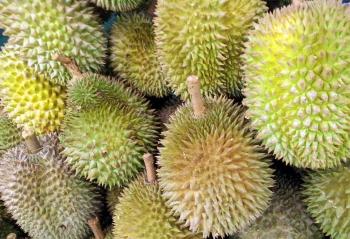 Scientists from Singapore, Hong Kong and Malaysia published the DNA blueprint of the common durian, Durio zibethinus-laying bare the genes responsible for its unique traits.
Such data is vital to better understanding of durian biodiversity.
Knowing more about the plant’s DNA may help protect it.
There are 30 known species in the Durio family, with D. zibethinus the most widely consumed.
The thorn-covered fruit, yellow-green in colour, can grow to the size of a rugby ball.
More than 250,000 hectares of land, an area about the size of Luxembourg, was devoted to durian cultivation in 2008, according to the study authors.
In 2016, durian imports to China accounted for about $600 million (511 million euros) compared to about $200 million for oranges, another key commodity.
There are about 200 specially-bred durian cultivars, with a range of textures, flavours and aromas to please a variety of palates-with pungent and bitter fruit prized in Malaysia and Singapore, and sweeter ones in Thailand.
Yet despite the durian’s importance as a tropical fruit crop, genetic research has been almost nonexistent
Genomic data could also be useful for "rapid quality control", they said, verifying the authenticity of fruit sold as desirable cultivars which may fetch high prices among aficionados.
Further studies will help to elucidate the ecological roles of these important and fascinating tropical plants. Scientists from Singapore, Hong Kong and Malaysia published the DNA blueprint of the common durian, Durio zibethinus-laying bare the genes responsible for its unique traits.
Such data is vital to better understanding of durian biodiversity.
Knowing more about the plant’s DNA may help protect it.
There are 30 known species in the Durio family, with D. zibethinus the most widely consumed.
The thorn-covered fruit, yellow-green in colour, can grow to the size of a rugby ball.
More than 250,000 hectares of land, an area about the size of Luxembourg, was devoted to durian cultivation in 2008, according to the study authors.
In 2016, durian imports to China accounted for about $600 million (511 million euros) compared to about $200 million for oranges, another key commodity.
There are about 200 specially-bred durian cultivars, with a range of textures, flavours and aromas to please a variety of palates-with pungent and bitter fruit prized in Malaysia and Singapore, and sweeter ones in Thailand.
Yet despite the durian’s importance as a tropical fruit crop, genetic research has been almost nonexistent
Genomic data could also be useful for "rapid quality control", they said, verifying the authenticity of fruit sold as desirable cultivars which may fetch high prices among aficionados.
Further studies will help to elucidate the ecological roles of these important and fascinating tropical plants.
|
▼ Octopus and cuttlefish inspired camouflaging skin [10-23-17]
 Scientists have found a way to develop a synthetic "camouflaging skin" inspired by studying and modelling the real thing in octopus and cuttlefish.
For the octopus and cuttlefish, instantaneously changing their skin colour and pattern to disappear into the environment is just part of their camouflage prowess.
These animals can also swiftly and reversibly morph their skin into a textured, 3D surface, giving the animal a ragged outline that mimics seaweed, coral, or other objects it detects and uses for camouflage.
In a study published in the journal Science, the researchers reported development of synthetic tissue groupings that allow programmable, 2D stretchable materials to both extend and retract a range of target 3D shapes.
The team’s pneumatically-activated material takes a cue from the 3D bumps, or papillae, that cephalopods such as such as octopus and cuttlefish can express in one-fifth of a second for dynamic camouflage, and then retract to swim away.
Papillae are examples of a muscular hydrostat, biological structures that consist of muscle with no skeletal support (such as the human tongue).
This is a classic example of bio-inspired engineering.
For example, the material could be controllably morphed to reflect light in its 2D spaces and absorb light in its 3D shapes. Scientists have found a way to develop a synthetic "camouflaging skin" inspired by studying and modelling the real thing in octopus and cuttlefish.
For the octopus and cuttlefish, instantaneously changing their skin colour and pattern to disappear into the environment is just part of their camouflage prowess.
These animals can also swiftly and reversibly morph their skin into a textured, 3D surface, giving the animal a ragged outline that mimics seaweed, coral, or other objects it detects and uses for camouflage.
In a study published in the journal Science, the researchers reported development of synthetic tissue groupings that allow programmable, 2D stretchable materials to both extend and retract a range of target 3D shapes.
The team’s pneumatically-activated material takes a cue from the 3D bumps, or papillae, that cephalopods such as such as octopus and cuttlefish can express in one-fifth of a second for dynamic camouflage, and then retract to swim away.
Papillae are examples of a muscular hydrostat, biological structures that consist of muscle with no skeletal support (such as the human tongue).
This is a classic example of bio-inspired engineering.
For example, the material could be controllably morphed to reflect light in its 2D spaces and absorb light in its 3D shapes.
|
▼ Collision of neutron stars yields answers to universe’s mysteries! [10-23-17]
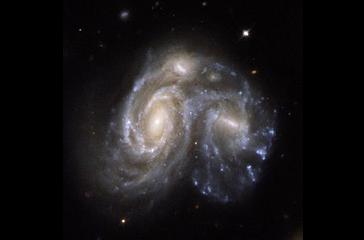 Scientists examined long-ago collision of two neutron stars.
Measurements of the light and other energy emanating from the crash have helped scientists explain how planet-killing gamma ray bursts are born, how fast the universe is expanding, and where heavy elements like platinum and gold come from.
It started in a galaxy called NGC 4993, seen from Earth in the Hydra constellation.
Two neutron stars, collapsed cores of stars so dense that a teaspoon of their matter would weigh 1 billion tons, danced ever faster and closer together until they collided.
The crash, called a kilonova, generated a fierce burst of gamma rays and a gravitational wave, a faint ripple in the fabric of space and time, first theorized by Albert Einstein.
Scientists finally now know what happens when an unstoppable force meets an immovable object and it’s a kilonova.
The crash happened 130 million years ago, while dinosaurs still roamed on Earth, but the signal didn’t arrive on Earth until Aug. 17 after traveling 130 million light-years. A light-year is 5.88 trillion miles.
Signals were picked up within 1.7 seconds of each other, by Nasa’s Fermi telescope, which detects gamma rays, and gravity wave detectors in Louisiana and Washington state that are a part of the LIGO Laboratory, whose founders won a Nobel Prize earlier this month.
A worldwide alert went out to focus telescopes on what became the most well-observed astronomical event in history.
Before August, the only other gravity waves detected by LIGO were generated by colliding black holes. But black holes let no light escape, so astronomers could see nothing.
This time there was plenty to see, measure and analyse: matter, light, and other radiation.
The Hubble Space Telescope even got a snapshot of the afterglow.
Finding where the crash happened wasn’t easy.
Eventually scientists narrowed the location down to 100 galaxies, began a closer search of those, and found it in the ninth galaxy they looked at.
The colliding stars spewed bright blue, super-hot debris that was dense and unstable.
Some of it coalesced into heavy elements, like gold, platinum and uranium.
Scientists had suspected neutron star collisions had enough power to create heavier elements, but weren’t certain until they witnessed it.
Calculations from a telescope measuring ultraviolet light showed that the combined mass of the heavy elements from this explosion is 1,300 times the mass of Earth.
And all that stuff - including lighter elements - was thrown out in all different directions and is now speeding across the universe.
Perhaps one day the material will clump together into planets the way ours was formed, maybe ones with rich veins of precious metals.
The crash also helped explain the origins of one of the most dangerous forces of the cosmos - short gamma ray bursts, focused beams of radiation that could erase life on any planet that happened to get in the way.
These bursts shoot out in two different directions perpendicular to where the two neutron stars first crash.
Scientists knew that the universe has been expanding since the Big Bang. By using LIGO to measure gravitational waves while watching this event unfold, researchers came up with a new estimate for how fast that is happening, the so-called Hubble Constant.
Before this, scientists came up with two slightly different answers using different techniques. The rough figure that came out of this event is between the original two.
The first optical images showed a bright blue dot that was very hot, which was likely the start of the heavy element creation process amid the neutron star debris.
After a day or two that blue faded, becoming much fainter and redder. And after three weeks it was completely gone.
Scientists involved with the search for gravitational waves said this was the event they had prepared for over more than 20 years. Scientists examined long-ago collision of two neutron stars.
Measurements of the light and other energy emanating from the crash have helped scientists explain how planet-killing gamma ray bursts are born, how fast the universe is expanding, and where heavy elements like platinum and gold come from.
It started in a galaxy called NGC 4993, seen from Earth in the Hydra constellation.
Two neutron stars, collapsed cores of stars so dense that a teaspoon of their matter would weigh 1 billion tons, danced ever faster and closer together until they collided.
The crash, called a kilonova, generated a fierce burst of gamma rays and a gravitational wave, a faint ripple in the fabric of space and time, first theorized by Albert Einstein.
Scientists finally now know what happens when an unstoppable force meets an immovable object and it’s a kilonova.
The crash happened 130 million years ago, while dinosaurs still roamed on Earth, but the signal didn’t arrive on Earth until Aug. 17 after traveling 130 million light-years. A light-year is 5.88 trillion miles.
Signals were picked up within 1.7 seconds of each other, by Nasa’s Fermi telescope, which detects gamma rays, and gravity wave detectors in Louisiana and Washington state that are a part of the LIGO Laboratory, whose founders won a Nobel Prize earlier this month.
A worldwide alert went out to focus telescopes on what became the most well-observed astronomical event in history.
Before August, the only other gravity waves detected by LIGO were generated by colliding black holes. But black holes let no light escape, so astronomers could see nothing.
This time there was plenty to see, measure and analyse: matter, light, and other radiation.
The Hubble Space Telescope even got a snapshot of the afterglow.
Finding where the crash happened wasn’t easy.
Eventually scientists narrowed the location down to 100 galaxies, began a closer search of those, and found it in the ninth galaxy they looked at.
The colliding stars spewed bright blue, super-hot debris that was dense and unstable.
Some of it coalesced into heavy elements, like gold, platinum and uranium.
Scientists had suspected neutron star collisions had enough power to create heavier elements, but weren’t certain until they witnessed it.
Calculations from a telescope measuring ultraviolet light showed that the combined mass of the heavy elements from this explosion is 1,300 times the mass of Earth.
And all that stuff - including lighter elements - was thrown out in all different directions and is now speeding across the universe.
Perhaps one day the material will clump together into planets the way ours was formed, maybe ones with rich veins of precious metals.
The crash also helped explain the origins of one of the most dangerous forces of the cosmos - short gamma ray bursts, focused beams of radiation that could erase life on any planet that happened to get in the way.
These bursts shoot out in two different directions perpendicular to where the two neutron stars first crash.
Scientists knew that the universe has been expanding since the Big Bang. By using LIGO to measure gravitational waves while watching this event unfold, researchers came up with a new estimate for how fast that is happening, the so-called Hubble Constant.
Before this, scientists came up with two slightly different answers using different techniques. The rough figure that came out of this event is between the original two.
The first optical images showed a bright blue dot that was very hot, which was likely the start of the heavy element creation process amid the neutron star debris.
After a day or two that blue faded, becoming much fainter and redder. And after three weeks it was completely gone.
Scientists involved with the search for gravitational waves said this was the event they had prepared for over more than 20 years.
|
▼ Clean Ganga platform with interactive CSR web page [10-18-17]
 Facilitating private companies to undertake Corporate Social Responsibility (CSR) activities for Ganga rejuvenation, the government on 18th Oct 2017 launched an interactive web page on the National Mission for clean Ganga (NMCG) online platform.
The exclusive web page, launched by Union water resources minister Nitin Gadkari, carries all details of projects and activities which can be taken up by corporate houses under the CSR funds.
It will enable them to apply works online on the NMCG website's interactive page.
Launching the web page, Gadkari called upon the private sector to join the herculean task of Ganga rejuvenation with their resources, reach and experience by taking up projects of 'Namami Gange' under CSR activities.
Once a private company applies for works online under CSR policy, the NMCG will consider and approve the activities which contribute to cleaning and rejuvenation of the river Ganga and its tributaries.
Corporate houses may select one or more of these project activities by clicking on the appropriate tab provided on the web page.
Companies may also select other project activities of their choice if such projects contribute to the objectives of the 'Namami Gange' programme.
Project activities may be selected through proper field survey and feedback by engagement with the residents of the area wherein the project is proposed to be executed.
According to the NMCG, the project activities to be executed by the corporate houses as part of their CSR activities under the Namami Gange programme should provide due visibility, be effective and sustainable.
A monitoring mechanism has been integrated with the CSR website to reply to the technical queries and feedback received from corporate.
CSR: Know More Facilitating private companies to undertake Corporate Social Responsibility (CSR) activities for Ganga rejuvenation, the government on 18th Oct 2017 launched an interactive web page on the National Mission for clean Ganga (NMCG) online platform.
The exclusive web page, launched by Union water resources minister Nitin Gadkari, carries all details of projects and activities which can be taken up by corporate houses under the CSR funds.
It will enable them to apply works online on the NMCG website's interactive page.
Launching the web page, Gadkari called upon the private sector to join the herculean task of Ganga rejuvenation with their resources, reach and experience by taking up projects of 'Namami Gange' under CSR activities.
Once a private company applies for works online under CSR policy, the NMCG will consider and approve the activities which contribute to cleaning and rejuvenation of the river Ganga and its tributaries.
Corporate houses may select one or more of these project activities by clicking on the appropriate tab provided on the web page.
Companies may also select other project activities of their choice if such projects contribute to the objectives of the 'Namami Gange' programme.
Project activities may be selected through proper field survey and feedback by engagement with the residents of the area wherein the project is proposed to be executed.
According to the NMCG, the project activities to be executed by the corporate houses as part of their CSR activities under the Namami Gange programme should provide due visibility, be effective and sustainable.
A monitoring mechanism has been integrated with the CSR website to reply to the technical queries and feedback received from corporate.
CSR: Know More
- Section 135 of the Companies Act, 2013, requires companies having net worth of INR 500 crore or more and turnover of INR 1,000 crore or more during any financial year to spend at least 2% of the average of the net profits made by the company during the three immediately preceding financial years in pursuance of its Corporate Social Responsibility (CSR) policy.
- Activities in the CSR policy as detailed in Schedule VII to the Companies Act, 2013 include activities relating to ensuring environmental sustainability, ecological balance, protection of flora & fauna, animal welfare, agro-forestry, conservation of natural resources and maintaining quality of soil, air and water.
- The government had through a notification on October 24, 2014 brought activities relating to rejuvenation of river Ganga within the ambit of CSR activities.
|
▼ Neutron stars merger following LIGO-VIRGO collaboration [10-17-17]
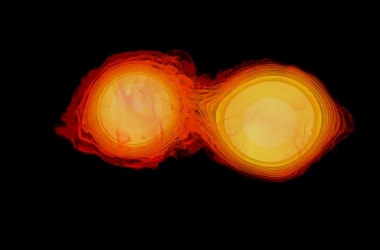 The LIGO-VIRGO collaboration, three members of which won this year’s physics Nobel Prize, strikes again, this time, to detect the merger of two neutron stars - extremely dense, massive but tiny, objects.
What is more striking is that gamma rays bursting from the event were observed by nearly 70 ground and space-based observatories.
This is the very first time that a cosmic event has been observed with gravitational waves as well as the light emanating from it.
Earlier observations made by LIGO have been of black hole mergers, and as no light can escape from a black hole, there was no such light counterpart to the measurements.
On August 17, LIGO’s real-time data analysis software caught a strong signal of gravitational waves from space in one of the two LIGO detectors.
At nearly the same time, the Gamma-ray Burst Monitor on NASA’s Fermi space telescope had detected a burst of gamma rays.
The fact that these two signals [the gravitational waves and the gamma ray bursts, which are essentially light waves] arrived at nearly the same time tell us that the speed of gravitational waves is extremely close to the speed of light.
This was predicted by Einstein, but it is the first time we are making a direct measurement,
LIGO-VIRGO collaboration includes about 1,500 scientists and of this about 40 are Indians.
The neutron stars of the signal detected on August 17 were located about 130 million light years away.
As these neutron stars spiralled together, they emitted gravitational waves that were detectable for about 100 seconds.
When they collided, a flash of light in the form of gamma rays was emitted.
This “gamma ray burst” was seen on Earth about two seconds after the gravitational waves were observed.
As a result, the gravitational wave detectors caught the signal which is the longest “chirp” heard so far - it lasted 100 seconds.
Neutron Stars: Know More The LIGO-VIRGO collaboration, three members of which won this year’s physics Nobel Prize, strikes again, this time, to detect the merger of two neutron stars - extremely dense, massive but tiny, objects.
What is more striking is that gamma rays bursting from the event were observed by nearly 70 ground and space-based observatories.
This is the very first time that a cosmic event has been observed with gravitational waves as well as the light emanating from it.
Earlier observations made by LIGO have been of black hole mergers, and as no light can escape from a black hole, there was no such light counterpart to the measurements.
On August 17, LIGO’s real-time data analysis software caught a strong signal of gravitational waves from space in one of the two LIGO detectors.
At nearly the same time, the Gamma-ray Burst Monitor on NASA’s Fermi space telescope had detected a burst of gamma rays.
The fact that these two signals [the gravitational waves and the gamma ray bursts, which are essentially light waves] arrived at nearly the same time tell us that the speed of gravitational waves is extremely close to the speed of light.
This was predicted by Einstein, but it is the first time we are making a direct measurement,
LIGO-VIRGO collaboration includes about 1,500 scientists and of this about 40 are Indians.
The neutron stars of the signal detected on August 17 were located about 130 million light years away.
As these neutron stars spiralled together, they emitted gravitational waves that were detectable for about 100 seconds.
When they collided, a flash of light in the form of gamma rays was emitted.
This “gamma ray burst” was seen on Earth about two seconds after the gravitational waves were observed.
As a result, the gravitational wave detectors caught the signal which is the longest “chirp” heard so far - it lasted 100 seconds.
Neutron Stars: Know More
- Neutron stars are the smallest, densest stars known to exist.
- These could be about 20 kilometres in diameter and have masses much greater than the Sun.
- A teaspoonful of neutron star material could hold a mass of a billion tonnes.
- They are formed when massive stars explode in supernovae.
- From informing detailed models of the inner workings of neutron stars and the emissions they produce, to more fundamental physics such as general relativity, this event is just so rich.
|
▼ Greenland ice melts, reducing salinity in coastal waters [10-16-17]
 Melting ice is causing coastal waters in Greenland to become less saline, which may in turn affect marine life as well as the global ocean currents that keep Europe warm, a study warns.
For the first time, scientists from Aarhus University in Denmark have unveiled the long-term impact of the melting of the Greenland ice sheet.
The observed increase in freshwater content will affect the conditions in all Greenland fjords.
Over the years, the dramatic meltdown of ice in the Arctic Ocean has received great attention and is easy to observe through satellite images.
Also, glaciers have been observed to melt and retreat and the researchers know that today’s meltdown of the Greenland ice sheet has more than doubled compared with the period 1983-2003.
How the increased influx of fresh water will affect the marine environment is, however, largely unknown.
Now, unique annual measurements made within the framework of the ‘Greenland Ecosystem Monitoring Program’ since 2003 in northeast Greenland tell a clear tale - fresh water from the ice sheet accumulates in the surface layers of the surrounding sea and flows into the Greenland fjords.
Measurements show that the surface water layers became up to 1.5 per mill less saline.
This is equivalent to an increase in freshwater content from about one metre in 2003 to almost four metres in 2015. Melting ice is causing coastal waters in Greenland to become less saline, which may in turn affect marine life as well as the global ocean currents that keep Europe warm, a study warns.
For the first time, scientists from Aarhus University in Denmark have unveiled the long-term impact of the melting of the Greenland ice sheet.
The observed increase in freshwater content will affect the conditions in all Greenland fjords.
Over the years, the dramatic meltdown of ice in the Arctic Ocean has received great attention and is easy to observe through satellite images.
Also, glaciers have been observed to melt and retreat and the researchers know that today’s meltdown of the Greenland ice sheet has more than doubled compared with the period 1983-2003.
How the increased influx of fresh water will affect the marine environment is, however, largely unknown.
Now, unique annual measurements made within the framework of the ‘Greenland Ecosystem Monitoring Program’ since 2003 in northeast Greenland tell a clear tale - fresh water from the ice sheet accumulates in the surface layers of the surrounding sea and flows into the Greenland fjords.
Measurements show that the surface water layers became up to 1.5 per mill less saline.
This is equivalent to an increase in freshwater content from about one metre in 2003 to almost four metres in 2015.
|
▼ Cancer detection camera inspired by mantis shrimp [10-16-17]
 Scientists have developed an ultra-sensitive camera that mimics the eye of the mantis shrimp and can potentially improve early cancer detection.
The camera, developed by researchers from the University of Illinois at Urbana-Champaign in the U.S., is capable of sensing both colour and polarisation.
The mantis shrimp, considered one of the best hunters in shallow waters, possesses one of the most sophisticated eyes in nature.
Compared with human vision, which has three different types of colour receptors, the mantis shrimp has 16 different types of colour receptors and six polarisation channels, the researchers said. Scientists have developed an ultra-sensitive camera that mimics the eye of the mantis shrimp and can potentially improve early cancer detection.
The camera, developed by researchers from the University of Illinois at Urbana-Champaign in the U.S., is capable of sensing both colour and polarisation.
The mantis shrimp, considered one of the best hunters in shallow waters, possesses one of the most sophisticated eyes in nature.
Compared with human vision, which has three different types of colour receptors, the mantis shrimp has 16 different types of colour receptors and six polarisation channels, the researchers said.
|
▼ Albatross can fly 800 km in one day! [10-13-17]
 MIT scientists have unveiled the key behind the marathon flight of the wandering albatross, which can fly nearly 800 km in a single day, with just an occasional flap of its wings.
The albatross is one of the most efficient travellers in the animal world.
The birds use their formidable wingspans, measuring up to 11 feet across, to catch and ride the wind.
Observers have noted for centuries that these feathered giants keep themselves aloft for hours, just above the ocean surface, by soaring and diving between contrasting currents of air, as if riding a side-winding rollercoaster - a flight pattern known as dynamic soaring.
Now, engineers at the Massachusetts Institute of Technology (MIT) in the US have developed a model to simulate dynamic soaring.
The researchers have used it to identify the optimal flight pattern that an albatross should take in order to harvest the most wind and energy.
They found that as an albatross banks or turns to dive down and soar up, it should do so in shallow arcs, keeping almost to a straight, forward trajectory.
The new model will be useful in gauging how albatross flight patterns may change as wind patterns shift with changing climate, researchers said.
It also may inform the design of wind-propelled drones and gliders which could be used to perform long-duration, long-range monitoring missions in remote regions of the world, researchers said.
The team’s project was inspired, in part, by contests of dynamic soaring, in which competitors launch gliders from atop mountains and track the speed of each glider as it dives down and soars up. MIT scientists have unveiled the key behind the marathon flight of the wandering albatross, which can fly nearly 800 km in a single day, with just an occasional flap of its wings.
The albatross is one of the most efficient travellers in the animal world.
The birds use their formidable wingspans, measuring up to 11 feet across, to catch and ride the wind.
Observers have noted for centuries that these feathered giants keep themselves aloft for hours, just above the ocean surface, by soaring and diving between contrasting currents of air, as if riding a side-winding rollercoaster - a flight pattern known as dynamic soaring.
Now, engineers at the Massachusetts Institute of Technology (MIT) in the US have developed a model to simulate dynamic soaring.
The researchers have used it to identify the optimal flight pattern that an albatross should take in order to harvest the most wind and energy.
They found that as an albatross banks or turns to dive down and soar up, it should do so in shallow arcs, keeping almost to a straight, forward trajectory.
The new model will be useful in gauging how albatross flight patterns may change as wind patterns shift with changing climate, researchers said.
It also may inform the design of wind-propelled drones and gliders which could be used to perform long-duration, long-range monitoring missions in remote regions of the world, researchers said.
The team’s project was inspired, in part, by contests of dynamic soaring, in which competitors launch gliders from atop mountains and track the speed of each glider as it dives down and soars up.
|
▼ First mobile health for all three armed forces, MedWatch launched [10-13-17]
 On the occasion of its 85th anniversary, the Indian Air Force has launched an innovative mobile health App named `MedWatch' in keeping with the Prime Minister's vision of ‘Digital India'.
The concept and content of the App is by the Directorate General of Medical Services (Air) and it has been developed in-house with zero financial outlay by the Directorate of Information Technology (DIT).
‘MedWatch’, available on the IAF's AFCEL network, comprises a host of features that will provide authentic health information to all IAF personnel.
A Reminder Tool to enable timely immunization for the children of all Air Warriors is an important component of the App. This will directly enable 'Mission Indradhanush' of the Govt of India.
‘MedWatch’, the first mobile health app in the three Armed Services, was launched by Air Chief Marshal BS Dhanoa PVSM AVSM YSM VM ADC, Chief of the Air Staff, during the Air Force Commanders' Conference at New Delhi on 11 Oct 17. On the occasion of its 85th anniversary, the Indian Air Force has launched an innovative mobile health App named `MedWatch' in keeping with the Prime Minister's vision of ‘Digital India'.
The concept and content of the App is by the Directorate General of Medical Services (Air) and it has been developed in-house with zero financial outlay by the Directorate of Information Technology (DIT).
‘MedWatch’, available on the IAF's AFCEL network, comprises a host of features that will provide authentic health information to all IAF personnel.
A Reminder Tool to enable timely immunization for the children of all Air Warriors is an important component of the App. This will directly enable 'Mission Indradhanush' of the Govt of India.
‘MedWatch’, the first mobile health app in the three Armed Services, was launched by Air Chief Marshal BS Dhanoa PVSM AVSM YSM VM ADC, Chief of the Air Staff, during the Air Force Commanders' Conference at New Delhi on 11 Oct 17.
|
▼ Nine SNPs influence skin colour in Indians [10-12-17]
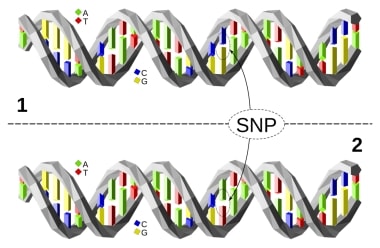 account for 31% variation in the colour of the skin.
Researchers tested 30 SNPs that were earlier studied for skin colour in other parts of the world.
Based on certain criteria, only 22 of the 30 SNPs were found suitable for statistical test in the Indian population.
About nine SNPs have significant association with skin colour in people living in India.
Samples were collected from people living in Karnataka and Telangana in the south, Maharashtra and Rajasthan in the west, Jammu and Kashmir and Uttarakhand in the north, and Jharkhand, West Bengal and Assam in the east.
The single-base variant rs1426654 accounts for 25-38% of skin colour variation between Africans and Europeans.
Like earlier studies, this study too found this single-base variant was strongly associated with skin pigmentation in the Indian population.
In fact, rs1426654 was one of the four SNPs that had maximum effect on skin pigmentation in people living here.
The gene variants (allele) that give the skin a darker colour due to the presence of higher amount of melanin pigment are found in people living in south India while those living in north India have gene variants that make the skin lighter.
Being closer to the equator, the darker skin in the south Indian population protects them from strong UV rays of the Sun.
The darker skin of people in south India was reflected in higher mean melanin index (a representation of the amount of melanin in the skin) of 48 compared with mean melanin index of 39 in the case of people in north India.
The population in east and west India has intermediate values (mean MI of 41). The melanin index did not vary within a given geographical region.
Chromosome of SNPs: Know More account for 31% variation in the colour of the skin.
Researchers tested 30 SNPs that were earlier studied for skin colour in other parts of the world.
Based on certain criteria, only 22 of the 30 SNPs were found suitable for statistical test in the Indian population.
About nine SNPs have significant association with skin colour in people living in India.
Samples were collected from people living in Karnataka and Telangana in the south, Maharashtra and Rajasthan in the west, Jammu and Kashmir and Uttarakhand in the north, and Jharkhand, West Bengal and Assam in the east.
The single-base variant rs1426654 accounts for 25-38% of skin colour variation between Africans and Europeans.
Like earlier studies, this study too found this single-base variant was strongly associated with skin pigmentation in the Indian population.
In fact, rs1426654 was one of the four SNPs that had maximum effect on skin pigmentation in people living here.
The gene variants (allele) that give the skin a darker colour due to the presence of higher amount of melanin pigment are found in people living in south India while those living in north India have gene variants that make the skin lighter.
Being closer to the equator, the darker skin in the south Indian population protects them from strong UV rays of the Sun.
The darker skin of people in south India was reflected in higher mean melanin index (a representation of the amount of melanin in the skin) of 48 compared with mean melanin index of 39 in the case of people in north India.
The population in east and west India has intermediate values (mean MI of 41). The melanin index did not vary within a given geographical region.
Chromosome of SNPs: Know More
- All the nine SNPs that are significantly associated with skin pigmentation are found in chromosome 15. The researchers found a few SNPs are found close together as two blocks in the chromosome.
- While one block of the chromosome has two SNPs, the other block has three SNPs. SNPs found together tend to have combined effect on skin colour.
- Since children tend to inherit small blocks of chromosome from parents, the SNPs found close together are inherited as a whole from parents.
|
▼ WHO releases guidelines to combat childhood obesity [10-11-17]
 With increasing evidence that childhood obesity is a “global epidemic” affecting even the poorer nations, the World Health Organization (WHO) has released new guidelines on how trained professionals can better identify youngsters in need of help.
India has the second highest number of obese children in the world after China.
Doctors say identification of obesity in children is the main issue as often parents think a chubby child is a healthy child.
The WHO guidelines titled “Assessing and managing children at primary healthcare facilities to prevent overweight and obesity in the context of the double burden of malnutrition” provides updates for the Integrated Management of Childhood Illness (IMCI).
The guideline includes counselling, dieting and assessment of eating habits along with the usual weight and height measurements.
In 2016, one half of all children overweight or obese lived in Asia and one quarter lived in Africa.
Paradoxically, overweight and obesity is found in populations where under-nutrition remains common - the term ‘double-burden of malnutrition’ is sometimes used to describe these settings.”
The Indian Medical Association (IMA) is disseminating the WHO guideline to all its members.
The prevalence of obesity in children reflects changing patterns towards unhealthy diets and physical inactivity.
A study published in Paediatric Obesity says India will have over 17 million children with excess weight by 2025.
Dr. Aggarwal said that urbanisation, increased income, availability of fast foods, educational demands, television viewing and gaming have led to a rise in the consumption of foods high in fats, sugar and salt and low physical activity.
Most obese children develop early puberty, joint pain and find it difficult to exercise. This in turn results in metabolic syndrome and they end up with Type 2 diabetes. With increasing evidence that childhood obesity is a “global epidemic” affecting even the poorer nations, the World Health Organization (WHO) has released new guidelines on how trained professionals can better identify youngsters in need of help.
India has the second highest number of obese children in the world after China.
Doctors say identification of obesity in children is the main issue as often parents think a chubby child is a healthy child.
The WHO guidelines titled “Assessing and managing children at primary healthcare facilities to prevent overweight and obesity in the context of the double burden of malnutrition” provides updates for the Integrated Management of Childhood Illness (IMCI).
The guideline includes counselling, dieting and assessment of eating habits along with the usual weight and height measurements.
In 2016, one half of all children overweight or obese lived in Asia and one quarter lived in Africa.
Paradoxically, overweight and obesity is found in populations where under-nutrition remains common - the term ‘double-burden of malnutrition’ is sometimes used to describe these settings.”
The Indian Medical Association (IMA) is disseminating the WHO guideline to all its members.
The prevalence of obesity in children reflects changing patterns towards unhealthy diets and physical inactivity.
A study published in Paediatric Obesity says India will have over 17 million children with excess weight by 2025.
Dr. Aggarwal said that urbanisation, increased income, availability of fast foods, educational demands, television viewing and gaming have led to a rise in the consumption of foods high in fats, sugar and salt and low physical activity.
Most obese children develop early puberty, joint pain and find it difficult to exercise. This in turn results in metabolic syndrome and they end up with Type 2 diabetes.
|
▼ Working memory deficits in children due to air pollution: Scientists [10-10-17]
 Exposure to air pollution on the way to school can have damaging effects on growth of children's working memory, suggests new research.
The study found an association between a reduction in working memory and exposure to fine particulate matter (PM2.5) - fine inhalable particles that have diameters of 2.5 micrometres or less-and black carbon-a pollutant directly related to traffic-during the walking commute to and from school.
The findings of an earlier study had shown that 20 percent of a child's daily dose of black carbon is inhaled during urban commutes.
The results of earlier toxicological and experimental studies have shown that these short exposures to very high concentrations of pollutants can have a disproportionately high impact on health.
The detrimental effects may be particularly marked in children because of their smaller lung capacity and higher respiratory rate.
The study was carried out in Barcelona and enrolled over 1,200 children aged from 7 to 10, from 39 schools, all of whom walked to school on a daily basis.
The children's working memory and attention capacity were assessed several times during the 12-month study.
Their exposure to air pollution over the same period was calculated on the basis of estimated levels on the shortest walking route to their school.
Statistical analysis of the findings revealed that exposure to PM2.5 and black carbon was associated with a reduction in the growth of working memory.
An interquartile range increase in PM 2.5 and black carbon levels were associated with a decline of 4.6 percent and 3.9 percent, respectively, in the expected annual growth of working memory, the study said.
The interquartile range (IQR) is a measure of variability based on dividing a data set into quartiles. Exposure to air pollution on the way to school can have damaging effects on growth of children's working memory, suggests new research.
The study found an association between a reduction in working memory and exposure to fine particulate matter (PM2.5) - fine inhalable particles that have diameters of 2.5 micrometres or less-and black carbon-a pollutant directly related to traffic-during the walking commute to and from school.
The findings of an earlier study had shown that 20 percent of a child's daily dose of black carbon is inhaled during urban commutes.
The results of earlier toxicological and experimental studies have shown that these short exposures to very high concentrations of pollutants can have a disproportionately high impact on health.
The detrimental effects may be particularly marked in children because of their smaller lung capacity and higher respiratory rate.
The study was carried out in Barcelona and enrolled over 1,200 children aged from 7 to 10, from 39 schools, all of whom walked to school on a daily basis.
The children's working memory and attention capacity were assessed several times during the 12-month study.
Their exposure to air pollution over the same period was calculated on the basis of estimated levels on the shortest walking route to their school.
Statistical analysis of the findings revealed that exposure to PM2.5 and black carbon was associated with a reduction in the growth of working memory.
An interquartile range increase in PM 2.5 and black carbon levels were associated with a decline of 4.6 percent and 3.9 percent, respectively, in the expected annual growth of working memory, the study said.
The interquartile range (IQR) is a measure of variability based on dividing a data set into quartiles.
|
▼ Soil bacteria pass antibiotic resistance: Scientists [10-9-17]
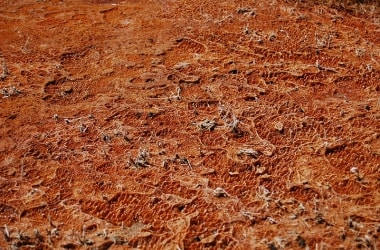 Antibiotic resistance can be passed between bacteria found in the soil, researchers, including one of Indian origin, have found.
Researchers from North Carolina State University in the US studied antibiotic resistance and how it can persist and spread among food animals, humans and the environment they all share.
The study found that spreading manure on the ground as fertiliser can also spread antibiotic resistance to bacteria in the soil.
Bacteria contain small DNA molecules known as plasmids.
These plasmids are separate from the bacterias actual DNA, and can pick up and exchange genes between bacteria.
The researchers took soil samples from a swine farm prior to and for three weeks after a manure spread.
They had previously tested the manure for antibiotic resistant strains of salmonella, a pathogen responsible for causing the highest number of bacterial food borne illnesses in the US every year.
After sampling the soil, researchers found that antibiotic-resistant salmonella bacteria were still present in the manure up to 21 days after it had been spread.
They also discovered that a particular plasmid associated with the antibiotic-resistant salmonella from the manure, which weighed around 95 kilo-base (kb), was now turning up in different salmonella serotypes from the soil samples and every serotype with plasmid 95 kb was now resistant to antibiotics.
This tells us that this particular plasmid is shuttling across different serotypes.
It could explain why we find antibiotic resistant salmonella strains even on farms that do not use antibiotics.
It seems that once antibiotic resistance takes hold, it doesn’t go away.
These bacteria are simply better equipped to survive and so they prosper. Antibiotic resistance can be passed between bacteria found in the soil, researchers, including one of Indian origin, have found.
Researchers from North Carolina State University in the US studied antibiotic resistance and how it can persist and spread among food animals, humans and the environment they all share.
The study found that spreading manure on the ground as fertiliser can also spread antibiotic resistance to bacteria in the soil.
Bacteria contain small DNA molecules known as plasmids.
These plasmids are separate from the bacterias actual DNA, and can pick up and exchange genes between bacteria.
The researchers took soil samples from a swine farm prior to and for three weeks after a manure spread.
They had previously tested the manure for antibiotic resistant strains of salmonella, a pathogen responsible for causing the highest number of bacterial food borne illnesses in the US every year.
After sampling the soil, researchers found that antibiotic-resistant salmonella bacteria were still present in the manure up to 21 days after it had been spread.
They also discovered that a particular plasmid associated with the antibiotic-resistant salmonella from the manure, which weighed around 95 kilo-base (kb), was now turning up in different salmonella serotypes from the soil samples and every serotype with plasmid 95 kb was now resistant to antibiotics.
This tells us that this particular plasmid is shuttling across different serotypes.
It could explain why we find antibiotic resistant salmonella strains even on farms that do not use antibiotics.
It seems that once antibiotic resistance takes hold, it doesn’t go away.
These bacteria are simply better equipped to survive and so they prosper.
|
▼ Smart bandage using 5G technology to detect wound healing [10-9-17]
 Smart bandage using 5G technology to detect wound healing
Scientists in the UK have designed a new “intelligent” bandage which can detect how well a wound is healing and send a progress report to the doctor.
The bandage, which could be trialled within the next 12 months, uses real-time 5G technology to monitor what treatment is needed and also keep track of a patient’s activity levels.
The intelligent dressing uses nano-technology to sense the state of the wound at any one specific time.
It would connect that wound to a 5G infrastructure and that infrastructure through your telephone will also know things about you - where you are, how active you are at any one time.
The plaster would help clinicians know the performance of the specific wound at any specific time, who can then tailor the treatment protocol for the individual.
3D printers would be used to produce the bandages which would bring down the cost. Smart bandage using 5G technology to detect wound healing
Scientists in the UK have designed a new “intelligent” bandage which can detect how well a wound is healing and send a progress report to the doctor.
The bandage, which could be trialled within the next 12 months, uses real-time 5G technology to monitor what treatment is needed and also keep track of a patient’s activity levels.
The intelligent dressing uses nano-technology to sense the state of the wound at any one specific time.
It would connect that wound to a 5G infrastructure and that infrastructure through your telephone will also know things about you - where you are, how active you are at any one time.
The plaster would help clinicians know the performance of the specific wound at any specific time, who can then tailor the treatment protocol for the individual.
3D printers would be used to produce the bandages which would bring down the cost.
|
▼ Scientists capture first images of Death Star moon Phobos [10-6-17]
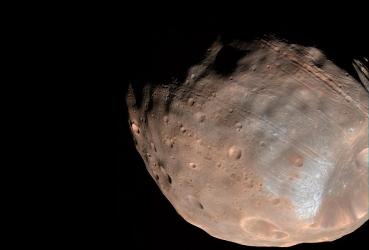 Mars Odyssey orbiter has captured its first images of the ‘Death Star’ moon Phobos–a region that could one day host a human-mission outpost.
Using the Thermal Emission Imaging System (THERMIS) camera, the orbiter has gathered new information on the changing surface temperatures of the Martian moon over the course of a day, revealing how quickly the ground warms and cools.
In stunning new images from the Sept 29 observation, NASA has combined the visible-wavelength and infrared data to show the surface colour-coded by temperature.
ASA has combined the visible-wavelength and infrared data to show the surface colour-coded by temperature.
By reading the photo from left to right, it reveals a sequence of times of day, from pre-dawn through sunrise, and long after dawn, according to NASA.
NASA has combined the visible-wavelength and infrared data to show the surface colour-coded by temperature.
By reading the photo from left to right, it reveals a sequence of times of day, from pre-dawn through sunrise, and long after dawn, according to NASA.
Phobos: Know More Mars Odyssey orbiter has captured its first images of the ‘Death Star’ moon Phobos–a region that could one day host a human-mission outpost.
Using the Thermal Emission Imaging System (THERMIS) camera, the orbiter has gathered new information on the changing surface temperatures of the Martian moon over the course of a day, revealing how quickly the ground warms and cools.
In stunning new images from the Sept 29 observation, NASA has combined the visible-wavelength and infrared data to show the surface colour-coded by temperature.
ASA has combined the visible-wavelength and infrared data to show the surface colour-coded by temperature.
By reading the photo from left to right, it reveals a sequence of times of day, from pre-dawn through sunrise, and long after dawn, according to NASA.
NASA has combined the visible-wavelength and infrared data to show the surface colour-coded by temperature.
By reading the photo from left to right, it reveals a sequence of times of day, from pre-dawn through sunrise, and long after dawn, according to NASA.
Phobos: Know More
- A football-shaped object just 16.5 miles by 13.5 miles by 11 miles, Phobos is one of the smallest moons in the solar system.
- It is so tiny that it would fit comfortably inside the Washington, D.C. Beltway.
- The little moon completes an orbit in just 7 hours and 39 minutes, which is faster than Mars rotates.
- Rising in the Martian west, it runs three laps around the Red Planet in the course of one Martian day, which is about 24 hours and 40 minutes.
- It’s the only natural satellite in the solar system that circles its planet in a time shorter than the parent planet’s day.
- Part of the observed face of Phobos was in pre-dawn darkness, part in morning daylight.
- Including a predawn area in the observation is useful because all the heating from the previous day’s sunshine has reached its minimum there.
- By reading the photo from left to right, it reveals a sequence of times of day, from pre-dawn through sunrise, and long after dawn, according to NASA.
- While other orbiters have taken high-resolution photos of the Martian moon, THEMIS is the first to capture this type of infrared information.
- This can provide information on the mineral composition, as well as the texture, of the surface.
- The texture is related to the ground’s ability to warm up and cool down, the researchers explain.
Scientists are working to understand if Phobos, and the smaller Martian moon Deimos, are captured asteroids or pieces of Mars itself, knocked in space by impacts.
- The orbiter gathered new information on the changing surface temperatures of the Martian moon over the course of a day.
- Odyssey’s new observations are the first the craft has captured of Phobos since it began orbiting the Red Planet in 2001.
|
▼ Know more about Tabby's Star [10-6-17]
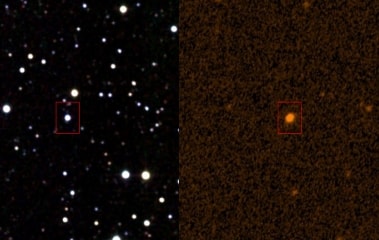 Unusual dips in brightness shown by the mysterious Tabby’s Star may be caused by an uneven dust cloud moving around the star, say scientists.
This is debunking an imaginative theory that blames a “megastructure” built by an advanced alien civilisation for the phenomenon.
Called KIC 8462852, also known as Boyajian’s Star, or Tabby’s Star, the object has experienced unusual dips in brightness — NASA’s Kepler space telescope even observed dimming of up to 20% over a matter of days.
The star has had much subtler but longer-term enigmatic dimming trends, with one continuing today.
None of this behaviour is expected for normal stars slightly more massive than the Sun.
Speculations have included the idea that the star swallowed a planet that it is unstable, and a theory that a giant contraption built by an advanced civilisation could be harvesting energy from the star, causing its brightness to decrease.
Researcher found that the cause of the dimming over long periods is likely an uneven dust cloud moving around the star.
They found less dimming in the infrared light from the star than in its ultraviolet light.
Any object larger than dust particles would dim all wavelengths of light equally when passing in front of Tabby’s Star.
This pretty much rules out the alien megastructure theory, as that could not explain the wavelength-dependent dimming.
Instead, there is a cloud of dust orbiting the star with a roughly 700-day orbital period.
Researchers observed Tabby’s Star in ultraviolet using Swift, and in infrared using Spitzer.
Supplementing the space telescopes, they also observed the star in visible light during the same period using AstroLAB IRIS, a public observatory with a 68 centimetre reflecting telescope located near the Belgian village of Zillebeke.
Based on the strong ultraviolet dip, the researchers determined the blocking particles must be bigger than interstellar dust, small grains that could be located anywhere between Earth and the star.
Such small particles could not remain in orbit around the star because pressure from its starlight would drive them farther into space.
Dust that orbits a star, called circumstellar dust, is not so small it would fly away, but also not big enough to uniformly block light in all wavelengths. Unusual dips in brightness shown by the mysterious Tabby’s Star may be caused by an uneven dust cloud moving around the star, say scientists.
This is debunking an imaginative theory that blames a “megastructure” built by an advanced alien civilisation for the phenomenon.
Called KIC 8462852, also known as Boyajian’s Star, or Tabby’s Star, the object has experienced unusual dips in brightness — NASA’s Kepler space telescope even observed dimming of up to 20% over a matter of days.
The star has had much subtler but longer-term enigmatic dimming trends, with one continuing today.
None of this behaviour is expected for normal stars slightly more massive than the Sun.
Speculations have included the idea that the star swallowed a planet that it is unstable, and a theory that a giant contraption built by an advanced civilisation could be harvesting energy from the star, causing its brightness to decrease.
Researcher found that the cause of the dimming over long periods is likely an uneven dust cloud moving around the star.
They found less dimming in the infrared light from the star than in its ultraviolet light.
Any object larger than dust particles would dim all wavelengths of light equally when passing in front of Tabby’s Star.
This pretty much rules out the alien megastructure theory, as that could not explain the wavelength-dependent dimming.
Instead, there is a cloud of dust orbiting the star with a roughly 700-day orbital period.
Researchers observed Tabby’s Star in ultraviolet using Swift, and in infrared using Spitzer.
Supplementing the space telescopes, they also observed the star in visible light during the same period using AstroLAB IRIS, a public observatory with a 68 centimetre reflecting telescope located near the Belgian village of Zillebeke.
Based on the strong ultraviolet dip, the researchers determined the blocking particles must be bigger than interstellar dust, small grains that could be located anywhere between Earth and the star.
Such small particles could not remain in orbit around the star because pressure from its starlight would drive them farther into space.
Dust that orbits a star, called circumstellar dust, is not so small it would fly away, but also not big enough to uniformly block light in all wavelengths.
|
▼ Embryo transfer technology: Core of National Mission on Bovine Productivity [10-6-17]
 Embryo transfer technology (ETT) has revolutionized the breeding strategies in Bovines as a tool to optimize the genetic improvement in cattle.
Department of Animal husbandry, Dairying and Fisheries in co-operation with 12 States has undertaken a Mass Embryo Transfer programme in Indigenous Breeds under the scheme, National Mission on Bovine Productivity.
It has been planned to carry out 440 embryo transfers during October 2-10, 2017 throughout the country.
The programme is implemented with the objective of conservation and development of indigenous breeds under Rashtriya Gokul Mission.
Through the use of ETT, (i) a farmer can get a 5-6 fold increase in number of offsprings, (ii) the calves so born will be of high genetic merit and (iii) the offsprings born will be free from diseases.
The programme has been initiated in 12 ETT centres across the country from 2nd October and will continue till 10th October 2017.
Under this programme, embryos of higher genetic merit indigenous bovines are being transferred in to surrogate cows.
Embryos of Indigenous breeds such as Sahiwal, Gir, Red Sindhi, Ongole, Deoni and Vechur have been proposed to be transferred under this programme.
On first day of ET programme held on 2nd October, 35 Nos. of embryos were transferred in to recipients.
Remaining will be transferred on different days till 10th of October 2017.
The technology now being taken up to the doorstep of the farmers will result in rapid propagation of high genetic merit indigenous cattle. Embryo transfer technology (ETT) has revolutionized the breeding strategies in Bovines as a tool to optimize the genetic improvement in cattle.
Department of Animal husbandry, Dairying and Fisheries in co-operation with 12 States has undertaken a Mass Embryo Transfer programme in Indigenous Breeds under the scheme, National Mission on Bovine Productivity.
It has been planned to carry out 440 embryo transfers during October 2-10, 2017 throughout the country.
The programme is implemented with the objective of conservation and development of indigenous breeds under Rashtriya Gokul Mission.
Through the use of ETT, (i) a farmer can get a 5-6 fold increase in number of offsprings, (ii) the calves so born will be of high genetic merit and (iii) the offsprings born will be free from diseases.
The programme has been initiated in 12 ETT centres across the country from 2nd October and will continue till 10th October 2017.
Under this programme, embryos of higher genetic merit indigenous bovines are being transferred in to surrogate cows.
Embryos of Indigenous breeds such as Sahiwal, Gir, Red Sindhi, Ongole, Deoni and Vechur have been proposed to be transferred under this programme.
On first day of ET programme held on 2nd October, 35 Nos. of embryos were transferred in to recipients.
Remaining will be transferred on different days till 10th of October 2017.
The technology now being taken up to the doorstep of the farmers will result in rapid propagation of high genetic merit indigenous cattle.
|
▼ Real-time monitoring of droughts through IIT datasets [10-6-17]
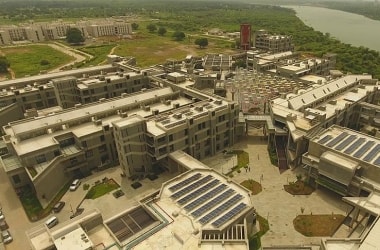 Near real-time monitoring of drought at a 5-km scale that will help policy makers in water management at a district level is now possible, thanks to tools developed and made available online by researchers at the Indian Institute of Technology (IIT) Gandhinagar.
The researchers offer precipitation and temperature datasets and drought indicators available from 1980 to April 2017 covering the entire South Asian region.
The data will be updated weekly.
Besides drought, the datasets can also be used for monitoring heat and cold waves in South Asia.
We don’t know whether a particular region is in drought as we don’t have real-time rainfall and temperature data at appropriate scale.
IMD [Indian Meteorology Department] provides daily rainfall data mainly during the monsoon season.
There’s no real-time information at high-resolution about drought after the monsoon season.
IMD’s drought information is based only on rainfall data and does not incorporate the role of air temperature.
But higher temperature after the monsoon season can cause drought-like situation due to increased evaporation and transpiration losses.
Datasets on Drought: Know More Near real-time monitoring of drought at a 5-km scale that will help policy makers in water management at a district level is now possible, thanks to tools developed and made available online by researchers at the Indian Institute of Technology (IIT) Gandhinagar.
The researchers offer precipitation and temperature datasets and drought indicators available from 1980 to April 2017 covering the entire South Asian region.
The data will be updated weekly.
Besides drought, the datasets can also be used for monitoring heat and cold waves in South Asia.
We don’t know whether a particular region is in drought as we don’t have real-time rainfall and temperature data at appropriate scale.
IMD [Indian Meteorology Department] provides daily rainfall data mainly during the monsoon season.
There’s no real-time information at high-resolution about drought after the monsoon season.
IMD’s drought information is based only on rainfall data and does not incorporate the role of air temperature.
But higher temperature after the monsoon season can cause drought-like situation due to increased evaporation and transpiration losses.
Datasets on Drought: Know More
- The team wanted to provide information in near real-time on whether a region of interest is under drought and what part of a district or sub-basin is under drought.
- The emphasis was to develop a dataset at a finer resolution (5 km) as the data provided by IMD and other agencies is coarse (resolution of 25 km).
- The researchers used CHIRPS global rainfall data which are available at 5 km resolution and corrected the data for bias and errors.
- CHIRPS stands for Climate Hazards Group InfraRed Precipitation with Station.
- The precipitation dataset at a finer resolution of 5 km over the entire South Asian region was evaluated against a standard rainfall database (APHRODITE) that is available for South Asia and satellite-based information.
- Earlier studies have shown that the Aphrodite database matches the IMD rainfall data quite well.
- The drought indices — standardised precipitation index and standardised precipitation evapotranspiration index — were estimated using the bias-corrected, high-resolution data and evaluated against satellite-based drought products.
- The validation gives the confidence that the dataset can indicate the severity and extent of drought at a district and sub-basin level in south Asia.
- The researchers used the drought indices to assess severity and extent of drought in 2015 for a four-month period from June to September.
- The developed dataset and drought indicators performed well over the South Asian region.
- Apart from IMD, this is an additional effort to provide more real-time information on drought that can be used for decision-making.
|
▼ Japan's Kashiwazaki-Kariwa plant, housing its largest nuclear reactor given green signal [10-5-17]
 Japan's nuclear regulator has given an initial approval for the reactivation of two nuclear reactors that were shut down after the catastrophic Fukushima nuclear plant disaster in 2011.
The Nuclear Regulation Authority voted unanimously Oct 4 that the two reactors at the Kashiwazaki-Kariwa nuclear plant, operated by Tokyo Electric Power Company, had met new stricter safety standards imposed after the Fukushima disaster.
The Kashiwazaki-Kariwa plant, located in Niigata prefecture, is one of the world's largest nuclear plants, and the biggest in Japan.
A powerful 9.0 magnitude earthquake in March 2011 triggered a massive tsunami that killed 20,000 people and caused the meltdown of Fukushima's three nuclear reactors in northeastern Japan, making it the world's worst nuclear crisis since the 1986 Chernobyl disaster.
The Fukushima disaster forced the closure of all of Japan's nuclear plants, and there remains widespread public opposition to restarting the plants.
But Prime Minister Shinzo Abe has been pushing for a gradual return to nuclear power.
TEPCO is aiming to restart the plants to raise the funds needed to compensate hundreds of thousands of residents displaced by the Fukushima accident.
It will likely take several months before TEPCO gets final approval to restart the Kashiwazaki-Kariwa plant. Japan's nuclear regulator has given an initial approval for the reactivation of two nuclear reactors that were shut down after the catastrophic Fukushima nuclear plant disaster in 2011.
The Nuclear Regulation Authority voted unanimously Oct 4 that the two reactors at the Kashiwazaki-Kariwa nuclear plant, operated by Tokyo Electric Power Company, had met new stricter safety standards imposed after the Fukushima disaster.
The Kashiwazaki-Kariwa plant, located in Niigata prefecture, is one of the world's largest nuclear plants, and the biggest in Japan.
A powerful 9.0 magnitude earthquake in March 2011 triggered a massive tsunami that killed 20,000 people and caused the meltdown of Fukushima's three nuclear reactors in northeastern Japan, making it the world's worst nuclear crisis since the 1986 Chernobyl disaster.
The Fukushima disaster forced the closure of all of Japan's nuclear plants, and there remains widespread public opposition to restarting the plants.
But Prime Minister Shinzo Abe has been pushing for a gradual return to nuclear power.
TEPCO is aiming to restart the plants to raise the funds needed to compensate hundreds of thousands of residents displaced by the Fukushima accident.
It will likely take several months before TEPCO gets final approval to restart the Kashiwazaki-Kariwa plant.
|
▼ New technology makes teacups and toy cars work as TV remote controls! [10-4-17]
 Scientists have developed a technology that can turn everyday objects - such as teacups or toy cars - into remote controls for televisions.
Researchers said the ‘Matchpoint’ technology, which only requires a simple webcam, works by displaying moving targets that orbit a small circular widget in the corner of the TV screen.
These targets correspond to different functions - such as volume, changing channel or viewing a menu.
The user synchronises the direction of movement of the target, with their hand, head or an object, to achieve what researchers call ‘spontaneous spatial coupling’, which activates the desired function.
Unlike existing gesture control technology, the software does not look for a specific body part - such as a hand - it has been trained to identify.
The technology looks for rotating movement so it does not require calibration, or the software to have prior knowledge of objects.
This provides much more flexibility and ease for the user as it works even while hands are full.
When selecting volume adjustment or channel selection, sliders appear.
The user moves their hand, head, or object, in the required direction indicated by the slider to change the volume or to find the desired channel.
As well as televisions, the technology can also be used with other screens.
Multiple pointers can be created to allow more than one user to point at drawings or pictures on interactive whiteboards simultaneously.
Matchpoint also allows users to manipulate images on whiteboards by using two hands to zoom in and out, and rotate images.
In addition to short-term couplings, users can also link stationary objects to controls, which even when left for prolonged periods will retain their control function. Scientists have developed a technology that can turn everyday objects - such as teacups or toy cars - into remote controls for televisions.
Researchers said the ‘Matchpoint’ technology, which only requires a simple webcam, works by displaying moving targets that orbit a small circular widget in the corner of the TV screen.
These targets correspond to different functions - such as volume, changing channel or viewing a menu.
The user synchronises the direction of movement of the target, with their hand, head or an object, to achieve what researchers call ‘spontaneous spatial coupling’, which activates the desired function.
Unlike existing gesture control technology, the software does not look for a specific body part - such as a hand - it has been trained to identify.
The technology looks for rotating movement so it does not require calibration, or the software to have prior knowledge of objects.
This provides much more flexibility and ease for the user as it works even while hands are full.
When selecting volume adjustment or channel selection, sliders appear.
The user moves their hand, head, or object, in the required direction indicated by the slider to change the volume or to find the desired channel.
As well as televisions, the technology can also be used with other screens.
Multiple pointers can be created to allow more than one user to point at drawings or pictures on interactive whiteboards simultaneously.
Matchpoint also allows users to manipulate images on whiteboards by using two hands to zoom in and out, and rotate images.
In addition to short-term couplings, users can also link stationary objects to controls, which even when left for prolonged periods will retain their control function.
|
▼ New Chikungunya drug in the offing [10-3-17]
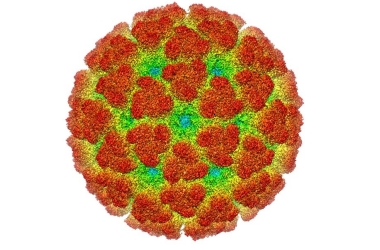 A drug to treat chikungunya virus infection is in the offing, and in vitro studies carried out by a team of researchers from the Indian Institute of Technology (IIT) Roorkee show promise.
Currently, there is no cure for the disease and treatment is focused more on relieving the symptoms.
Since the team led by Prof. Shailly Tomar from the Department of Biotechnology at IIT Roorkee used an existing drug piperazine, safety of the drug is already known and hence the trials on animals and humans will be more to understand the efficacy of the drug in treating chikungunya infection.
Piperazine is used for the treatment of worm infections.
The antiviral drug indinavir used for treating HIV positive people is a piperazine-based molecule.
The derivatives of piperazine are used as anti-histamines and anti-depressants drugs too.
Based on crystal structure, the researchers ascertained that the drug molecule binds to the hydrophobic pocket of capsid protein of Aura virus.
Drug binding studies were also carried out using chikungunya virus and it was found that the binding of the drug at the caspid protein was better in the case of chikungunya virus.
The function of capsid protein is essential for the virus budding and replication of virus.
On studying the antiviral activity of piperazine molecule against chikungunya, it was found that the molecule inhibits virus replication.
In the presence of this drug, the amount of virus released by infected cells is less. The drug showed very good antiviral activity.
Chikungunya viral load reduces significantly when treated with 3 millimolar (mM) of piperazine and has “barely detectable cell toxicity” when the dosage is doubled to 6mM.
Compared with controls, the inhibition of the virus replication was nearly 98% when 6mM of the drug was used.
Once the drug binds to the target, the capsid protein’s interaction with the enveloped protein of virus is inhibited and hence the virus release from infected cells is affected.
Virus replication and budding are correlated. The monkey cell lines were infected with very low virus concentration and then allowed to grow.
After 24 hours, the number of virus being released by the infected cells was studied. If the virus is able to replicate then should find more virus, which was not the case.
The chikungunya viral load had reduced by 98% at the end of 24 hours but increases at 48 hours indicating that inhibition of virus replication becomes less at the end of 48 hours compared with 24 hours.
This could be because the drug does not kill all the virus at the end of 24 hours and the drug supplied initially is already bound to the capsid protein target in the virus.
So when the virus reinfects nearby cells and replicates, there is not enough drug to bind to the new capsid protein molecules being produced.
The researchers are planning to carry out trials on animals.
Since the drug is already approved for use in humans, toxicity studies in animals will not be needed. But studies on animals to evaluate the antiviral activity and, hence, the efficacy has to be carried out. A drug to treat chikungunya virus infection is in the offing, and in vitro studies carried out by a team of researchers from the Indian Institute of Technology (IIT) Roorkee show promise.
Currently, there is no cure for the disease and treatment is focused more on relieving the symptoms.
Since the team led by Prof. Shailly Tomar from the Department of Biotechnology at IIT Roorkee used an existing drug piperazine, safety of the drug is already known and hence the trials on animals and humans will be more to understand the efficacy of the drug in treating chikungunya infection.
Piperazine is used for the treatment of worm infections.
The antiviral drug indinavir used for treating HIV positive people is a piperazine-based molecule.
The derivatives of piperazine are used as anti-histamines and anti-depressants drugs too.
Based on crystal structure, the researchers ascertained that the drug molecule binds to the hydrophobic pocket of capsid protein of Aura virus.
Drug binding studies were also carried out using chikungunya virus and it was found that the binding of the drug at the caspid protein was better in the case of chikungunya virus.
The function of capsid protein is essential for the virus budding and replication of virus.
On studying the antiviral activity of piperazine molecule against chikungunya, it was found that the molecule inhibits virus replication.
In the presence of this drug, the amount of virus released by infected cells is less. The drug showed very good antiviral activity.
Chikungunya viral load reduces significantly when treated with 3 millimolar (mM) of piperazine and has “barely detectable cell toxicity” when the dosage is doubled to 6mM.
Compared with controls, the inhibition of the virus replication was nearly 98% when 6mM of the drug was used.
Once the drug binds to the target, the capsid protein’s interaction with the enveloped protein of virus is inhibited and hence the virus release from infected cells is affected.
Virus replication and budding are correlated. The monkey cell lines were infected with very low virus concentration and then allowed to grow.
After 24 hours, the number of virus being released by the infected cells was studied. If the virus is able to replicate then should find more virus, which was not the case.
The chikungunya viral load had reduced by 98% at the end of 24 hours but increases at 48 hours indicating that inhibition of virus replication becomes less at the end of 48 hours compared with 24 hours.
This could be because the drug does not kill all the virus at the end of 24 hours and the drug supplied initially is already bound to the capsid protein target in the virus.
So when the virus reinfects nearby cells and replicates, there is not enough drug to bind to the new capsid protein molecules being produced.
The researchers are planning to carry out trials on animals.
Since the drug is already approved for use in humans, toxicity studies in animals will not be needed. But studies on animals to evaluate the antiviral activity and, hence, the efficacy has to be carried out.
|
▼ Perovskite cell: Know more [10-3-17]
 These cells represent the most exciting approach to build solar cells that are inexpensive and highly efficient.
A perovskite solar cell is one that includes a perovskite-structured compound, most commonly a hybrid organic-inorganic lead or tin halide-based material, as the light-harvesting active layer.
The terms “perovskite” and “perovskite structure” are often used interchangeably.
Technically, a perovskite is a type of mineral that was first found in the Ural Mountains and named after Lev Perovski who was the founder of the Russian Geographical Society.
A perovskite structure is any compound that has the same structure as the perovskite mineral. A perovskite is a material that has the same crystal structure as the mineral calcium titanium oxide, also known as Perovskite.
Generally, perovskite compounds have a chemical formula ABX3, where ‘A’ and ‘B’ represent cations and X is an anion that bonds to both.
Because of their unique crystal make-up, perovskites often display a number of interesting properties, including superconductivity, giant magnetoresistance, and ferroelectricity. It has only been recently that their applications to clean energy have drawn scientific attention.
Within the last several years, perovskite solar cells have outpaced all other third-generation solar technologies in terms of efficiency. These cells represent the most exciting approach to build solar cells that are inexpensive and highly efficient.
A perovskite solar cell is one that includes a perovskite-structured compound, most commonly a hybrid organic-inorganic lead or tin halide-based material, as the light-harvesting active layer.
The terms “perovskite” and “perovskite structure” are often used interchangeably.
Technically, a perovskite is a type of mineral that was first found in the Ural Mountains and named after Lev Perovski who was the founder of the Russian Geographical Society.
A perovskite structure is any compound that has the same structure as the perovskite mineral. A perovskite is a material that has the same crystal structure as the mineral calcium titanium oxide, also known as Perovskite.
Generally, perovskite compounds have a chemical formula ABX3, where ‘A’ and ‘B’ represent cations and X is an anion that bonds to both.
Because of their unique crystal make-up, perovskites often display a number of interesting properties, including superconductivity, giant magnetoresistance, and ferroelectricity. It has only been recently that their applications to clean energy have drawn scientific attention.
Within the last several years, perovskite solar cells have outpaced all other third-generation solar technologies in terms of efficiency.
|